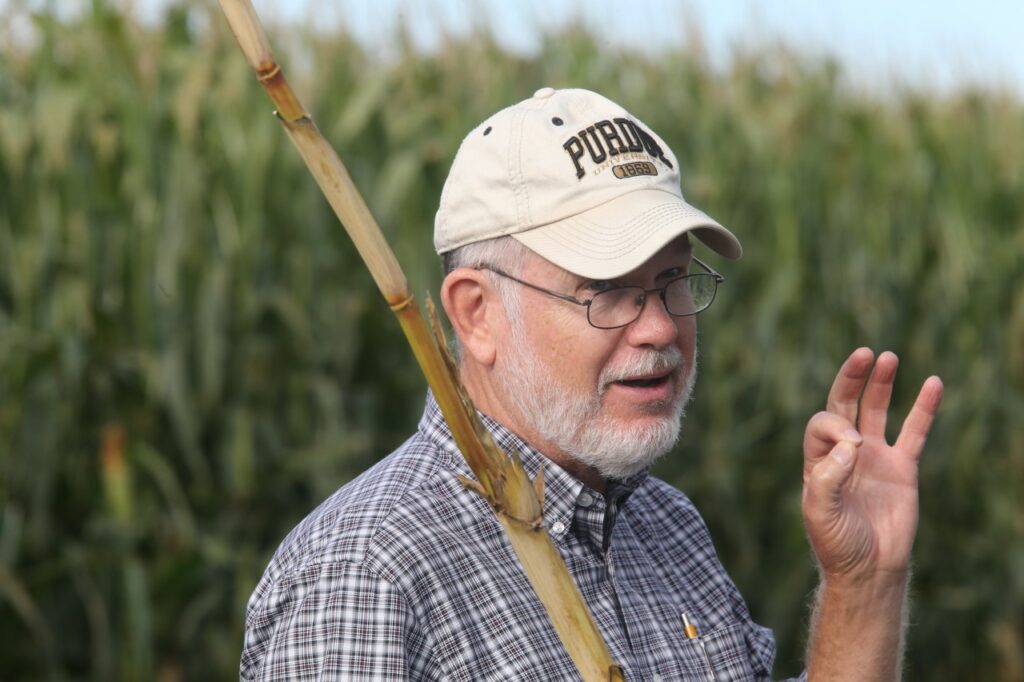When late September comes around the corner, harvest follows closely behind it. Now, in the second week of October, the U.S. is starting to get glimpses of how successful this year was in terms of corn, which was predicted to be lower than normal as of September’s World Agricultural Supply and Demand (WASDE) report.
“Total U.S. feed grain production in 2022 is forecast down 11.4 million tons in the September World Agricultural Supply and Demand (WASDE) report, on lower corn and sorghum yields and markedly lower corn harvested area,” the USDA Economic Research Service said in a release, noting that U.S. corn production was reduced 415 million bushels in September.
While corn production is down, projected yield is also down by a 2.9 bushel per acre drop to 172.5 bushels and a one million acre reduction in harvested area.
The Early Harvest Outlook
When you add in a late drought into the mix with harvest in the west, growers, agronomists and seed companies alike had concern from the outlook. Though the outlook was proven to be concerning, Mark Grundmayer says in Nebraska, harvest is starting with a positive slant.
“The positive that I’ve seen so far is we’re actually harvesting a decent crop given the major lack of rainfall that we’ve had in our dryland acres,” Grundmayer, agronomist from LG Seeds, says. “It’s early harvest. But I’ve heard about yield in the 120s to around 140 bushel per acre on dryland, and that’s on little rain from early July to now.”

While that’s lower than a normal year, on average the dry lands averages about 200 bushels per acre, Grundmayer still believes that the area is sitting fine.
“We’re well off the short historical pace of the last seven years, but we’re still sitting pretty good,” he says, adding that on the irrigated land, there’s been averages of 270 bushels per acre, but he’s expecting less this year on those areas as well.
For 2023’s season, Grundmayer says Nebraska might still suffer from drought.
“Our dry pattern started last October and continues. Seventy percent of the state of Nebraska is in a severe drought, while 40% is in either extreme or exceptional drought,” he says. “I think it’s going to have a big impact on what plans are for next growing season.”
In terms of other areas of the Midwest, like Indiana, drought hasn’t been a concern around most of the state — but different areas of the state have had a mixed bag at the start of harvest.
“It’s been a little hard to describe Indiana with one adjective this year, because we’ve had a mixed bag around the state, both in terms of the planting progress initially and as the rest of the summer played out,” says Bob Nielsen, Purdue University Extension corn specialist and professor of agronomy.
Areas of the state were challenged at the start of the season with frequent rains, causing planting to be delayed. However, other areas of Indiana got planting wrapped up as early as possible. Now, a drought keeps trying to extend its fingers throughout the Corn Belt.
“We had areas of the state, primarily Central and maybe in the north central areas, that got pretty dry — enough that it caused concern,” he adds. “I know certainly all the field trials that I have scattered around the state, there were a couple of sites that we were pretty concerned with.”

At this point in harvest, Nielsen says there’s still a lot of speculation. But, he believes that in his trials scattered around the state, they still have sites that yields will be above average due to timely rainfall.
The drier areas, however, have experienced a bit more stress than normal.
“Some of those areas that had been dry for extended periods certainly took its toll in many ways throughout the season, particularly in the last month, and have remained dry during grain fill,” he says. “It’s put a lot of pressure on the plant. In the last two or three weeks, these fields have been experiencing some severe stress during grain filling, and it tends to cause some premature death in the field and a higher risk of stalk lodging/breakage before harvest.”
Mix that with other stressors as hurricane season moves in, and Nielsen has a bit more concern especially depending on what Mother Nature decides to throw towards Indiana over the next 45 days.
Stay tuned for part two to see how breeders are looking to tackle drought for the future.
Want to read more? Visit:
Can Plant Breeding Ease Drought Concerns?
Will Soybeans Take Over Corn? Experts Say No
Corn Acres Down in 2022, Soybean Acreage Up
As Summer Comes to a Close, Farmers Face Drought and Production Challenges
Manage Nutrients and Maximize Crop Yields with Soil Sampling









